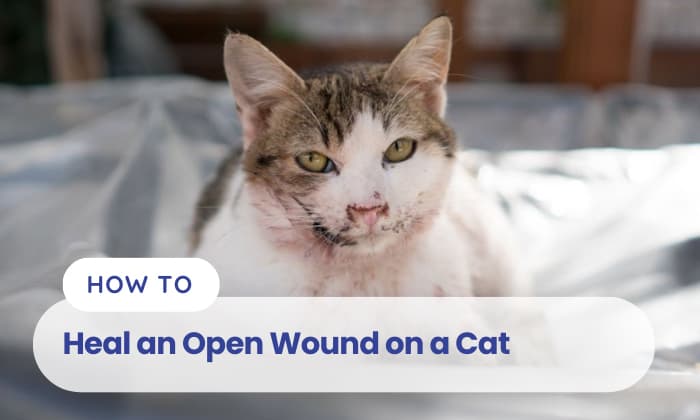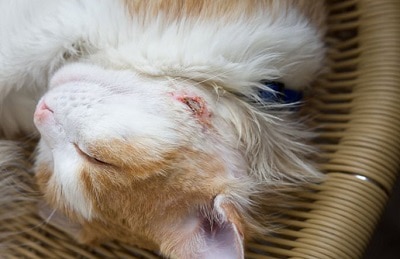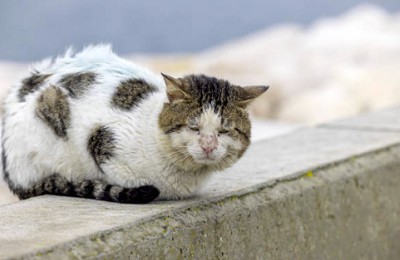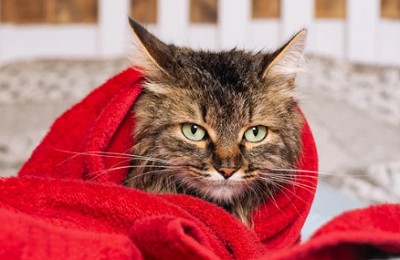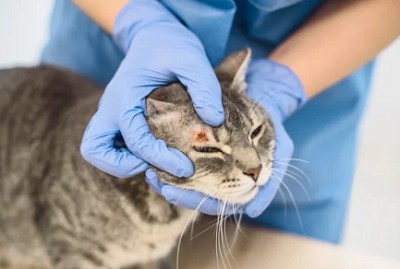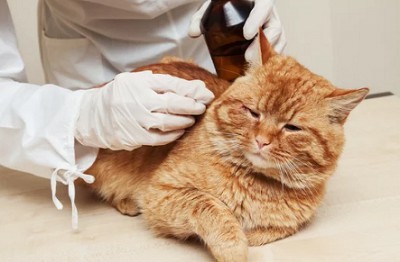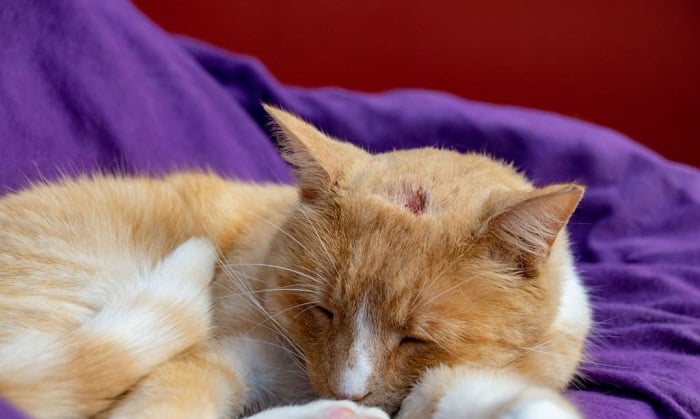Cats are mischievous creatures with peculiar instincts and inquisitive nature. As they feed their curiosity, they tend to engage in things they are not supposed to do.
For instance, you may notice your cat squeezing in tight spaces, such as under a shelf or behind furniture. This curiosity sometimes leads to accidents and minor injuries that require simple treatments.
That said, this article will provide you with a step-by-step guide on how to heal an open wound on a cat.
Table of Contents
Different Types of Wounds on a Cat
A wound is an injury that leads to breakage on the skin’s surface. More severe wounds may also cause the muscles under the skin to break.
Getting caught on sharp objects and scratching on rough surfaces are the common causes of open sore on a cat.
As a cat is always wary of its surroundings, the wounds it gets are usually minor and treatable at home. Below are the most common types of wounds your cat may acquire:
1. Bite Wound
If you have multiple cats at home, they may bite each other while playing. These bites result in puncture wounds or abrasions in more severe cases.
2. Minor Cuts
This type of wound in cats is superficial and only affects the skin, making it treatable at home. The common causes of minor cuts are sharp objects scratching the cat’s skin.
3. Blisters
Skin conditions, such as cat dermatitis, flea bites, and allergies, are the cause of blisters in cats. These conditions feel itchy for your cat, so they scratch their skin to the point of causing wounds.
Step-by-step to Heal an Open Wound on a Cat
Treating a cat’s wound at home early on will prevent infection. While the thought of treating your cat on your own is overwhelming, the process is relatively simple.
What To Prepare
- Sterile gauze
- Towel
- Antiseptic for cats’ wounds
- Bandage
Step 1. Soothe Your Pet
When your feline friend feels pain in its wound, it will not tolerate anyone touching it. Your pet may even become aggressive if you try to pick it up.
To calm your cat, get a towel that you can use to wrap it with. Wrapping a cat with a towel is a method veterinarians use to handle and treat cats.
You can also hold your pet by its nape to soothe it.
Step 2. Assess The Severity Of The Wound
Check your feline’s wound for infection or whether it is treatable at home. If the laceration is limited to the skin, you do not need a veterinarian to heal the cat’s wounds.
If the wound is fresh and bleeding, take a sterile gauze and use it to apply pressure and stop the bleeding. This step requires care, as the pressure you are applying can hurt your pet or cause it to become aggressive.
Step 3. Disinfect The Wound
The next step after stopping the wound from bleeding is disinfecting it. This step is also crucial even if the injury is not fresh.
Apply an antiseptic solution to the feline’s wound to clean it and prevent infection. You may also use water and antibacterial soap as home remedies for cat wounds.
However, never use hydrogen peroxide to clean the cat’s wound. This solution can irritate your feline friend’s skin, which may cause the wound to worsen.
Instead of puting hydrogen peroxide on cat wound, the other disinfectants you can use to clean a cat’s wound are:
- diluted betadine
- saline water
- antibacterial ointment for pets
Step 4. Dress The Wound
Felines tend to lick their skin as a way of cleaning it. However, a cat’s saliva contains thousands of bacteria that can infect its laceration.
So, it is vital to bandage a cat’s wound to prevent your feline friend from licking it.
After dressing the wound, it is crucial to check its healing regularly. There is a chance that the wound will become infected despite treating it well.
Depending on the severity of the wound, it may take a few days to weeks for it to heal. If it is not getting better, you need to take a cat to the vet for a wound.
The vet will ask you questions about the wound, such as when the feline had it or what you used to treat it.
For this reason, keeping a record of the home treatment you did is ideal.
How to Tell if an Open Wound on a Cat is Infected?
Failing to treat an open wound on a cat can cause it to become infected. Infected cat wounds will show signs that you should never ignore.
Discoloration around the wound is one of the first signs of cat wound infection. This sign can be difficult to notice as the furs of your cat may hide the affected skin.
Your cat’s wound may also swell, showing up as a bump under its fur. As the wound swells, it will cause pain to your cat.
A feline that suddenly becomes sensitive to touch may be feeling pain in its wound. If you do not put antibiotic ointment on a cat’s wound, the infection will become more serious, leading to:
- The warmth of the skin around the wound
- Pus-like, bloody discharge
- Vomiting
- Diarrhea
- Fever
FAQs
Will an open wound on a cat heal on its own?
A trivial scratch on your cat’s skin with no signs of infection will heal on its own. Meanwhile, wounds that cut through the tissues may require wound treatment for cats.
Tips to prevent the wound from closing too early
A cat’s wound should not close too early if it has pus. To prevent premature wound closure, gently massage the surrounding of the injury.
What ointment can I put on a cat wound?
If you wonder what to put on a cat wound, use any over-the-counter ointment formulated for pets. You can use an anti-bacterial ointment made for humans but you have to check the ingredients first.
If there are no ingredients that are unsafe for animals, you can use the ointment for your feline.
Conclusion
Cats are undoubtedly independent. However, there are times when they will still need help from a caretaker.
You should never ignore a cat’s wound, no matter how superficial it is. Your feline friend will lick its wound incessantly in hopes of treating it.
But instead of promoting healing, allowing your cat to lick its wound will only cause infection. So, knowing how to treat your cat’s wound at home is essential.
After all that’s said and done, we hope that you learned how to heal an open wound on a cat through this article.

I am Amy Sawy, a Doctor of Veterinary Medicine (DVM) graduate from the University of Kansas. y husband, Dr. Plummer, and I own a veterinary clinic in Phillipsburg, Kansas. In addition to my professional background, I am a devoted pet owner myself, with a household that includes dogs, rodents, and most notably, cats – a total of five felines in my home.
In 2020, I joined an organization as a professional writer, leveraging my experience and collaborating with my team to deliver the most valuable information for your cat’s care.


